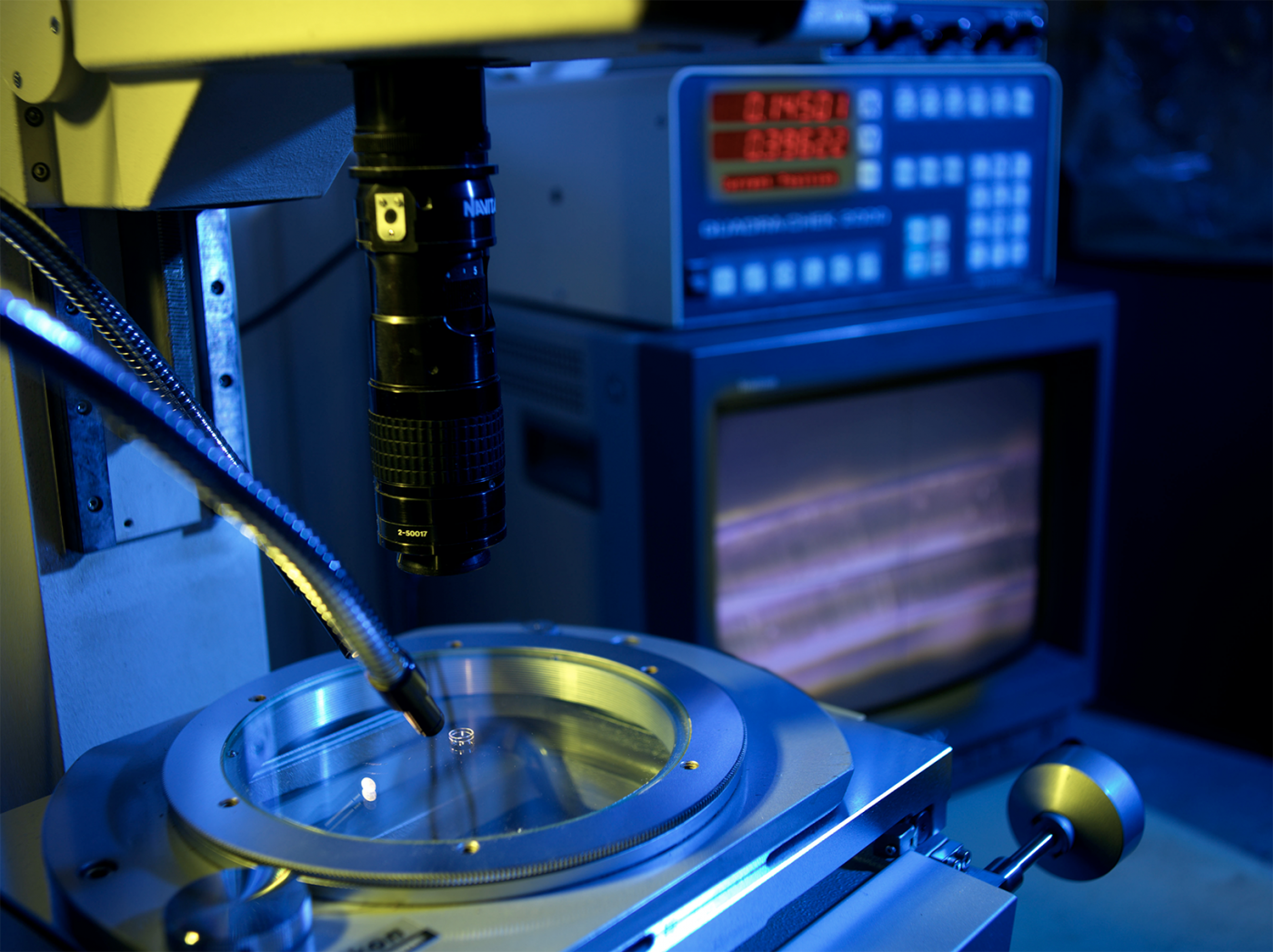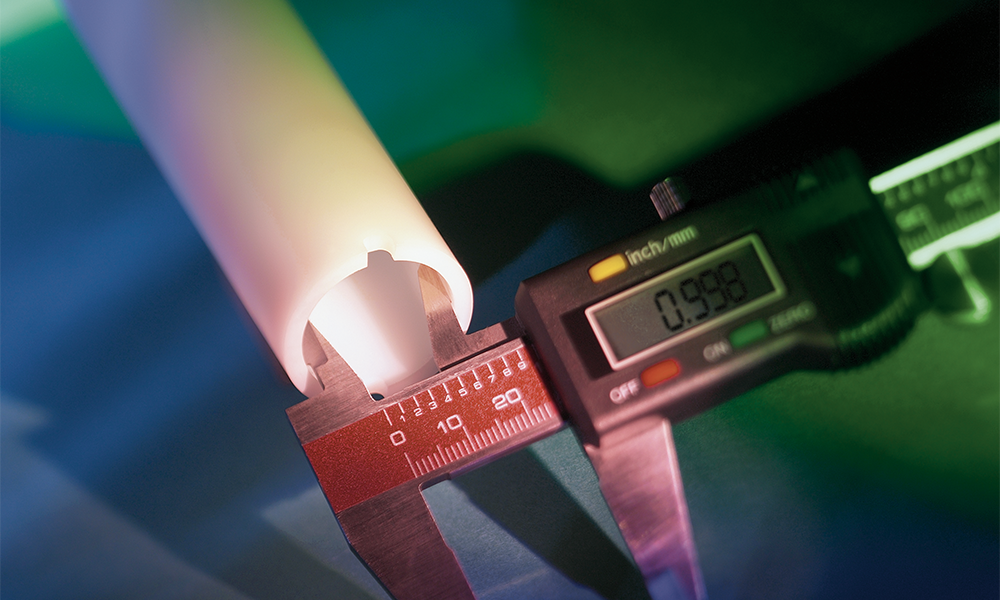 Teel is excited to work in regulated markets. We have the resources to excel where others may be concerned with your requirements. Teel already has experience in providing certified products to customers, including certification of active ingredient and product composition.
Teel is excited to work in regulated markets. We have the resources to excel where others may be concerned with your requirements. Teel already has experience in providing certified products to customers, including certification of active ingredient and product composition.
We currently have ISO 9001:2015 and ISO 13485:2016 certification for our manufacturing operations. Our lab is ISO 17025:2017 Accredited. See our Certificates for more detailed information.
Teel Plastics works within the following regulations, standards, and directives where applicable.
Medical, Cosmetics, and Food Packaging Market Standards
IQ/OQ/PQ: Installation qualification, operational qualification, performance qualification.
These are protocols commonly used in FDA-regulated industries, specifically the medical device and pharmaceutical industries, that regulate manufacturing validation. New or modified equipment or processes used to manufacture medical devices must go through a process of validation to determine if it can produce safe, quality products according to predetermined specifications.
IQ ensures that a device or piece of equipment has been installed according to manufacturer specifications or an installation checklist. This documented process may include specifications for the location and floor space needed for installation and other environmental or operating conditions.
OQ then involves testing the installed equipment or process and ensuring it performs as required within manufacturer-specified operating ranges. This is a detailed process, as all aspects of the machine, hardware and software, must be shown to be operating within acceptable limits for equipment. For processes, OQ establishes that the process window within which products meeting all specifications are produced. It usually involves varying things like cycle times, operating temperatures, and line speeds within a pre-defined operating range.
PQ is a final step that ensures the machine or process is performing as specified with reproducible results in real-world conditions. Generally, three to five repeated runs are conducted showing that quality product is made after a full startup with a full shutdown procedure between runs. It requires detailed documentation showing that all requirements for production are being met.
EU10/2020: Regulation on plastic materials and articles intended to come into contact with food
This European Union regulation focuses specifically on plastic materials intended to contact food. It specifies allowable substances, and substance combinations, as well as required testing methods and testing frequency. This is a formulation-based control on materials used for packaging in food and is frequently applied to cosmetic packaging applications.
cGMP: Current Good Manufacturing Practices
cGMP are manufacturing regulations enforced by the FDA in the medical device and pharmaceuticals industries. They ensure that a company’s manufacture of medical products includes proper design, monitoring, and controls. The regulations extend to the procurement of quality raw materials, discovering and addressing quality problems, and ensuring regular and reliable testing. This frequently extends to the manufacturing environment and hygienic controls.
FDA GRAS Substance Regulations
Sections 201 and 409 of the US Federal Food, Drug, and Cosmetic Act, limit food additives to those defined as “generally recognized as safe” (GRAS). This covers substances directly and intentionally added to food as well as substances used in food packaging that may reasonably be expected to enter into or affect the food they touch. Substances used for these purposes must, as defined by the standard, be considered safe for consumption.
A 510(k) is a submission that must be sent to the FDA per the Federal Food, Drug, and Cosmetic Act (FD&C act) before medical devices are marketed as safe and effective. The document must show that the device in question is substantially equivalent to a legally marketed device currently on the market. It must compare the devices and provide supporting evidence that the new device has the safety equivalent of the currently marketed device as that device meets the safety standards specified in the FD&C Act. Teel has supported customers needing documentation on materials and manufacturing as part of this process.
BfR Food Contact Material Recommendations
BfR is the German Federal Institute for Risk Assessment, which issues a set of recommendations for polymer materials intended to come into contact with food. The recommendations encourage good manufacturing practices to limit food contact with potentially harmful substances in polymers and are regularly updated based on current scientific research. It is commonly used for elastomers in food contact applications.
Water Treatment Market Standards
NSF/ANSI 14: Plastics Piping System Components and Related Materials
This standard establishes requirements for the health effects of plastic piping components used in potable water applications. In addition, it specifies the physical requirements of plastic piping components for both potable and non-potable water applications. Requirements include testing piping components to ASTM product standards (for features such as dimensions, extrusion quality, burst, sustained pressure, etc.), material property specifications, annual monitoring, and regular, unannounced inspections of the manufacturing facility.
NSF 61/ANSI/CAN 61: Drinking Water System Components
This standard establishes criteria for determining the health effects of potable water system components, which include plastic piping. Requirements include annual monitoring and regular, unannounced inspections of the manufacturing facility.
Industrial Pipe Market Standards
ASTM D2513: Standard Specification for Polyethylene (PE) Gas Pressure Pipe, Tubing, and Fittings
This specification establishes quality requirements for the manufacture and packaging of polyethylene gas pipe. It specifies dimension and tolerance requirements, including diameters, toe-in (diameter at cut end of pipe), wall thickness, ovality, and length. It also specifies standards, regulations, and testing procedures for minimum hydrostatic burst pressure, chemical resistance, melt index, sustained pressure, elevated temperature service, hydrostatic design basis (HDB) validation, rapid crack propagation, inside surface ductility, squeeze-off, and the fusion of pipe sections in the field with a focus on quality and safety.
This specification establishes quality requirements for the manufacture, packaging, and storage of polyethylene conduit, duct, and innerduct used with communication, CATV, and power cables and wires. It specifies dimension and tolerance requirements, including outside diameter (OD), wall thickness, specialty sizing, ovality, and toe-in. It also specifies standards, regulations, and testing procedures for density, melt index, slow crack growth, coextrusion, tensile properties, low-temperature performance, and friction reduction (where applicable). The specification also includes requirements for UV-degradation performance of colored conduit and standardizes the use of colored stripes used for identification. This is the most cited standard in the telecommunications conduit market.
Pest Control Market Standards
FIFRA: Federal Insecticide, Fungicide, and Rodenticide Act
FIFRA is a federal EPA regulation that controls the distribution, sale, and use of pesticides to protect human health and the environment. Pesticides sold in the US must be registered under this rule. It requires that facilities that manufacture, sell, or distribute pesticides must allow inspectors to examine the facility to ensure legal compliance and safety protocol adherence. Other provisions specified include proper labeling of products, proper storage facility management, and record retention.
Environmental Quality Standards
REACH: Registration, Evaluation, Authorisation, and Restriction of Chemicals
This is a European Union standard establishing regulations for the import of all chemical substances to the EU with the goal of protecting people and the environment, although it is commonly used in many other regions also. It establishes methods for collecting and assessing info on the properties and potential hazards of chemical substances and requires companies to register substances in or on the products they are importing. The standard specifies and regulates the use of “substances of very high concern,” or SVHCs, which include carcinogenic, mutagenic, and other toxic substances.
RoHS: Restriction of Hazardous Substances in Electrical and Electronic Equipment
This is a European Union directive that applies to the use of chemicals in electrical products and their components. With a goal of reducing toxic waste, RoHS limits the following ten substances: cadmium, lead, mercury, hexavalent chromium, polybrominated biphenyls, polybrominated diphenyl ethers, bis (2-ethylhexyl) phthalate (DEHP), benzyl butyl phthalate (BBP), dibutyl phthalate (DBP), and diisobutyl phthalate (DIBP). It is commonly applied to plastics as well, especially plastic colorants.


 ©2025 Teel Plastics
©2025 Teel Plastics